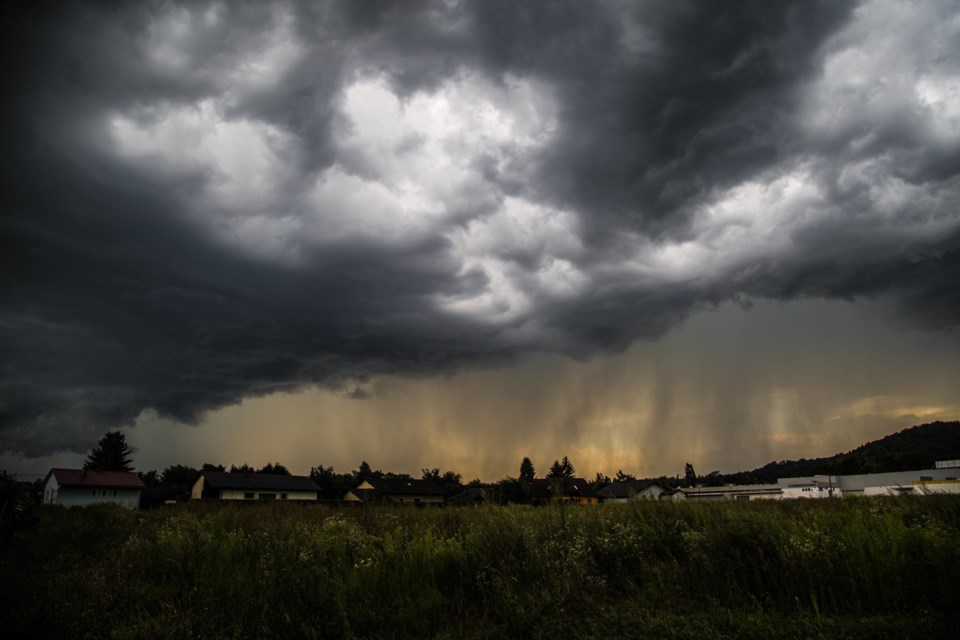If you think there have been more tornadoes in southwestern Ontario than normal this year, it might be that twister hunters are getting better at finding them.
The Northern Tornadoes Project (NTP) at Western University — a research lab dedicated to studying twisters — has confirmed 23 tornadoes in Ontario this year, with 13 touching down in southwestern Ontario.
“It’s definitely been pretty active here in the southwest,” said Greg Kopp, NTP’s lead researcher.
Nationally, NTP has confirmed 48 tornadoes, with another 51 weather events under investigation.
Canada averages about 60 tornadoes a year, meaning 2020 is on pace to eclipse that. But a study by NTP executive director David Sills estimates there could be as many as 200 a year, with many going undetected.
“Our project really began to try to find those missing tornadoes,” Kopp said. “Because we’re systematically going after more, we’re finding more even down here in the south.”
June 10 saw four tornadoes hit, in Brussels, Belgrave, Belmont and Newbury.
July 19 was the most active day so far, with six tornadoes confirmed in Beachville, Gads Hill, Blyth, Lucan, Thedford and Belmont.
There’s yet to be a twister in the region above EF1 on the Enhanced Fujita scale, which rates the intensity of tornadoes on a scale of EF0 to EF5.
More research will need to be conducted over a longer period to determine if there’s been a significant increase in tornado occurrence, Kopp said, and establish what could cause an uptick.
NTP aims to capture data and improve methods for tracking and identifying tornadoes. The hope is this will improve future weather warnings and better prepare both rural and urban areas for potential tornado strikes.
“To get a better understanding of tornado occurrence is important for assessing risk and developing infrastructure,” Kopp said.
“Communities are starting to be concerned with this.”
While large infrastructures, like nuclear reactors, are designed to withstand tornadoes, things like electrical grids aren’t that robust.
Houses, while rarely hit, are also susceptible, but Kopp noted this is starting to change.
In St. Thomas, Doug Tarry Homes is building an entire neighbourhood of tornado-resilient housing, with roofing and siding designed to withstand an EF2 tornado.
This year's weather events have helped southwestern Ontario live up to its reputation as Tornado Alley, with the Windsor-to-Barrie corridor ripe for twisters. The high humidity and proximity to the Great Lakes make the area more prone to tornadoes.
But so far, the region has yet to see anything close to the 2011 Goderich tornado — one of the worst in Ontario’s history.
Next week marks the ninth anniversary of the deadly Goderich twister, which killed one, injured 37 and caused an estimated $130 million in damage, including nearly destroying the historic downtown.
Kopp said there’s always a risk of a severe tornado hitting the region.
“Those kinds of events do happen, and we want to be even more prepared when they do so that it doesn’t become a news story,” he said.
TORNADOES IN SOUTHWESTERN ONTARIO, 2020:
June 10: Brussels, EF0
June 10: Belgrave, EF0
June 10: Belmont, EF1
June 10: Newbury, EF0
June 19: Staples, EF0
June 30: Kerwood, EF0
July 16: Brantford, EF0
July 19: Beachville, EF1
July 19: Gads Hill, EF1
July 19: Blyth, EF1
July 19: Lucan, EF1
July 19: Thedford, EF1
July 19: Belmont, EF1
Max Martin, Local Journalism Initiative Reporter, London Free Press



